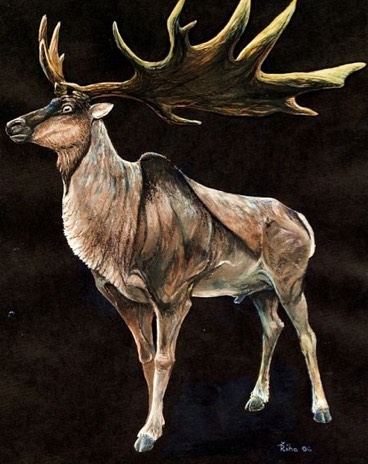Irish Elk On Flowvella
Megaloceros seen in Cahir Castle Have you seen an Irish Elk? It’s not something I’ve bumped into You’d know it if you had! Megaloceros Giganticus stood over two metres high at the shoulders and had antlers up to four metres wide.
It was the largest Deer that ever roamed the Earth. And it was Irish? It actually lived all over Europe – and in Russia and China. But the best fossilised examples have been found in Ireland, preserved in the peat bogs. Have you seen an Irish Elk? I certainly have: there are some whole skeletons in the wonderful, but their antlers hang in many a hall – by which I mean a ‘Baronial’ hall or castle. They seem to have been popular trophies to have mounted on the wall along with all the Foxes and Salmons that didn’t get away And these ‘trophies’ became sought after in the boom years: Christie’s sold a pair of antlers for £52,850 in 2001, and another pair from Powerscourt, Co Wicklow, sold for £77,353 in 2005.

Irish Elk Antlers


So, one day, our view from Nead an Iolair could be enhanced by a herd of grazing Giant Elks. Now, there’s a thought I’ll give the last word to Seamus Heaney – who found inspiration in Megaloceros: We have no prairies To slice a big sun at evening– Everywhere the eye concedes to Encrouching horizon, Is wooed into the cyclops’ eye Of a tarn. Our unfenced country Is bog that keeps crusting Between the sights of the sun. They’ve taken the skeleton Of the Great Irish Elk Out of the peat, set it up An astounding crate full of air. Butter sunk under More than a hundred years Was recovered salty and white. The ground itself is kind, black butter Melting and opening underfoot, Missing its last definition By millions of years.
They’ll never dig coal here, Only the waterlogged trunks Of great firs, soft as pulp. Our pioneers keep striking Inwards and downwards, Every layer they strip Seems camped on before. The bogholes might be Atlantic seepage. The wet centre is bottomless.
Irish Elk Pictures
(Bogland, Seamus Heaney 1969).